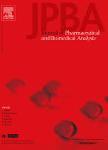版权所有:内蒙古大学图书馆 技术提供:维普资讯• 智图
内蒙古自治区呼和浩特市赛罕区大学西街235号 邮编: 010021

作者机构:Univ Silesia Katowice Inst Chem 9 Szkolna St PL-40006 Katowice Poland Univ Silesia Katowice Ctr Microscop Studies Matter SPIN Lab 75 Pulku Piechoty St 1 PL-41500 Chorzow Poland
出 版 物:《JOURNAL OF PHARMACEUTICAL AND BIOMEDICAL ANALYSIS》 (J. Pharm. Biomed. Anal.)
年 卷 期:2025年第256卷
页 面:116697页
核心收录:
学科分类:1007[医学-药学(可授医学、理学学位)] 0703[理学-化学] 10[医学]
基 金:National Science Centre, Poland [2018/29/N/ST4/01547] Research Excellence Initiative program of the University of Silesia in Katowice
主 题:Near-infrared hyperspectral imaging (NIR-HSI) Process analytical technology (PAT) Pharmaceutical quality control Hyperspectrogram One-class classification
摘 要:Near-infrared hyperspectral imaging (NIR-HSI) integrated with expert systems can support the monitoring of active pharmaceutical ingredients (APIs) and provide effective quality control of tablet formulations. However, existing quality control methods usually test a limited number of variability sources affecting the final product. This study examines the potential of NIR-HSI (in the spectral range of 935.61-1720.2 nm) as an advanced and high-throughput detector to identify different manufacturing factors and their fluctuations that impact tablet properties. These are, for instance, particle sizes of powdered excipients, their mixing, compression force used to form a tablet, origin of ingredients, storage conditions, and concentration of API. During the study, the novel expert system approach was developed to support NIR-HSI, enabling the detection of subtle, diverse substandard anomalies in tablets. The system combines (i) hyperspectrograms, which characterize and simplify tablet spatial heterogeneity through principal component analysis scores distribution, and (ii) a one-class classifier (OCC), trained exclusively on target class samples, without the need for substandard tablets. The system was trained to recognize known sources of variation and validated using tablets with cellulose, magnesium stearate, and ascorbic acid as API. It outperformed the alternative approach based on averaged spectra, achieving 100.00% sensitivity and 98.77% specificity.